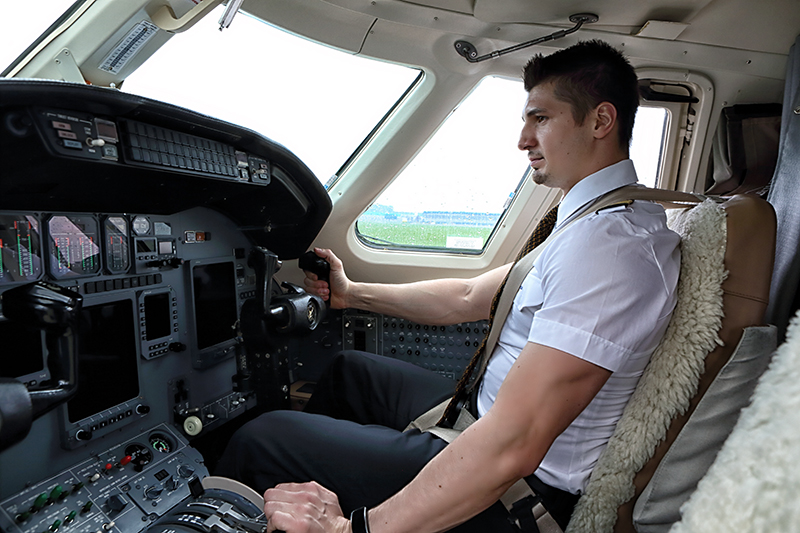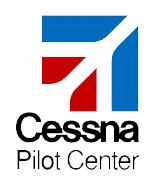
Applying for Flight Training in the USA Couldn’t be Simpler!
We have years of experience working with international flight students, and we know the challenges you face. At Palm Beach Flight Training, our goal is to make the whole process an enjoyable one for you, from application to graduation.
Just read through the following steps, and feel free to contact us with any questions, or to get started in your application process. Our phone number and email contact information are listed at the bottom of the page.
PART 1 – M1 VISA AND TSA REQUIREMENTS
All nonimmigrant students are required by Federal law to hold an M-1 visa to enter the United States to begin flight training. We have an I-20 Application that must be completed prior to seeking a visa from the U.S Embassy in your country. You can click on the link to the form and complete and submit it online, or fill out the form, print it out and sign it, then fax or email the form back to us. Please view the Enrollment Information document for further details.
Once we receive your application and $350 application fee, we will begin processing your I-20 application. After you submit the I-20 application, you may contact the U.S. Embassy in your country and schedule your visa interview. Visa approval times vary from country to country, so please allow sufficient time.
All non-US citizens are required by Federal Law to register with the United States Transportation Security Administration prior to commencing flight training in the U.S. This is an online process. (Please read all instructions before registering.)
Step 1: Click on the link https://fts.tsa.dhs.gov scroll down to “New Account” highlighted in blue. Once all the personal information has been filled out and submitted you will receive an email with a user ID and password. (See Helpful Hints below).
Step 2: Go back to the link above and type in the user ID and password you received in the email and proceed with the AFSP online application process.
Step 3: The candidate completes online training request forms requesting the following types of information:
- Residence and citizenship;
- Places and terms of employment;
- Details of the requested training; and
- Other background information.
Note: On the online TSA application you will see questions requesting “Resident Start Date” and “Resident End Date”. This question is in regard to how long you have lived at each listed address. For Course Type enter your training course (eg. Initial, Instrument, Multi).”
Step 4: Upon submission of the completed training request forms, the AFSP confirms the validity of the training request with the flight training provider identified by the candidate.
Step 5: Upon acknowledgement of the candidate’s request for flight training by the flight training provider, the candidate will be notified by AFSP and directed to pay the $130 USD processing fee.
Step 6: The candidate and flight training provider will be notified of a preliminary decision on the training request. The flight training candidate must complete a training request for each course or instance of training he/she wishes to attend, even if the training is with the same flight training provider.
Step 7: If the preliminary decision is favorable, the candidate will be provided with instructions on how to submit fingerprints. Do not submit fingerprints until you have received the fingerprint authorization and instructions from AFSP. An approval email will be sent to both the candidate and training provider. Fingerprints must be submitted and TSA clearance must be received before you can begin flight training.
When filling out the TSA registration online, please use these codes.
a) Course ID = Initial, Instrument, or Multi-Engine
b) Aircraft Category = 3
c) Student ID = You may create your own student ID number
Part 2 – CHOOSING A TRAINING COURSE
We offer a variety of options for the international flight student. Please explore the options listed below:
Private Pilot Courses – Single & Multi Requirements
40 hours total flight time, and 20 hours of dual which include:
- 3 hour cross country
- 3 hours night which include one cross country flight over 100 NM, 10 takeoffs and landings to full stop
- 3 hours instrument
- 3 hours test preparation within 2 calendar months of test
- 10 hours solo
- 5 hours solo cross country
- One solo cross country flight with three points and landings to full stop, total of 150 NM, one leg being at least 50 NM long, and three takeoffs and landings with full stops at an airport with operating control tower.
Instrument Courses – IFR (Instrument Rating (Airplane) Requirements)
50 hours x-country (P.I.C) at least 10 hours in airplanes
40 of actual or simulated instrument time, to include:
- 15 hours dual
- 3 hours instrument training within 2 months of practical test
- 1 IFR cross country of at least 250nm with 3 different approaches
Commercial Pilot Courses – Single & Multi Requirements
250 hours of flight time
100 hours in powered aircraft, at least 50 in airplane
100 hours (P.I.C.) which include:
- 50 hours in airplanes
- 50 hours in cross country, at least 10 hours in airplanes
- 20 hours of training which include:
- 10 hours instrument training – at least 5 hours in single-engine or multiengine
- 10 hours complex
- 1 cross country, 2 hours day VFR of more than 100 NM
- 1 cross country, 2 hours night VFR more than 100 NM
- 3 hours test preparation within 60 days of flight test
- 10 hours solo
- One x-country not less than 300 NM, one leg at least 250 NM from departure point
- 5 hours night VFR, 10 Takeoffs and landings at airport with operating control tower
Part 3 – INFORMATION ON REQUIREMENTS
Age
FAA Regulations require an applicant for a pilot’s license be at least 17 years of age to hold a Private Pilot Certificate, at least 18 years of age for the Commercial and Instructor Certificates, and at least 23 years of age for the Airline Transport Pilot Certificate.
Health
All applicants must pass an aviation medical examination before training starts. Applicants training for a Private Pilot Certificate only, will need an FAA 3rd class Medical. Applicants enrolling in the Commercial Pilot course or any of the Professional Pilot courses will need an FAA 1st class medical. If there is any doubt as to your ability to pass an FAA medical exam we recommend that you visit your local doctor for a general physical examination prior to making any committment to enroll.
Education
All applicants must have a high school diploma or its equivalent. FAA Regulations require that an applicant be able to fluently read, write, speak, and understand the English language. International students for whom English is not their native language are required to provide documentation as to their English language proficiency.
Student Visa
International students must be in possession of an M-1 student visa at the time of entry into the US. We are authorized by the Department of Homeland Security (DHS) to enroll international students under the M1 visa program. This program provides a flexible time frame to complete your training. We are required to obtain certain information about the student including the ability to pay for training and living expenses before we can issue a completed visa application form called the “I-20”. This form must be included in the package of documents required by US Embassy to process the visa and must also be presented together with your passport and visa stamp to an Immigration Officer on arrival in the United States.
Deposit Requirements
We request an initial $3500 deposit in your flying account prior to reserving a start date for your training or aircraft rental. International students must maintain at least a $500 balance in their flying account. Deposits can be made either by bank wire transfer, check (cheque) or credit card.
Do You Have Questions, or Are You Ready to Move Forward?
We’d love to help. You can call us at 561-963-8821, email us at info@pbflight.com, or contact us via the convenient email form below.


